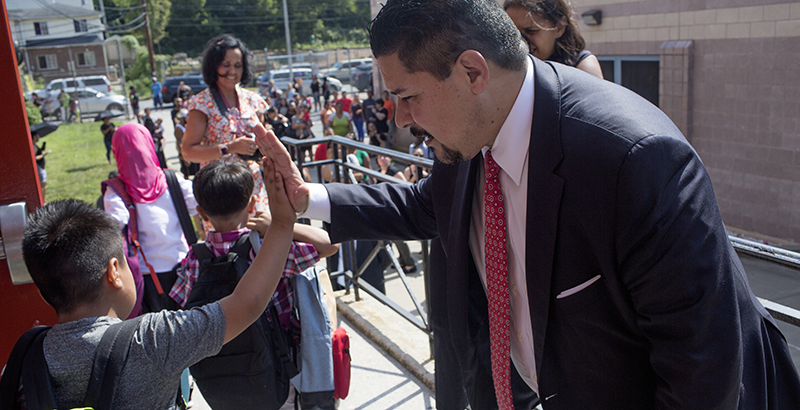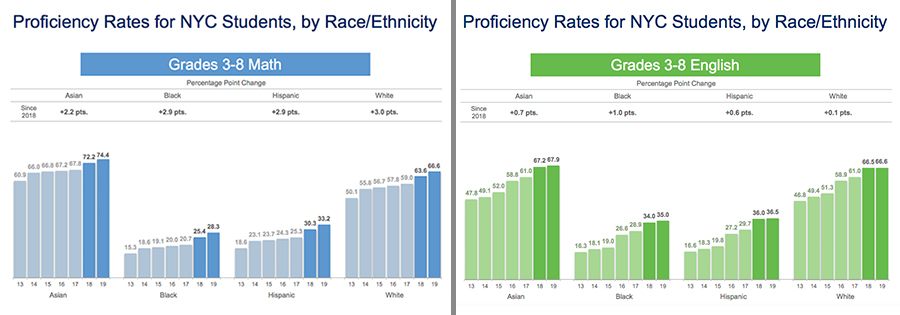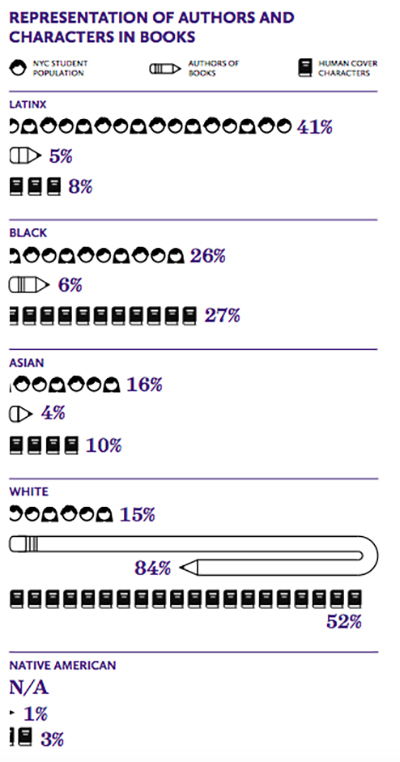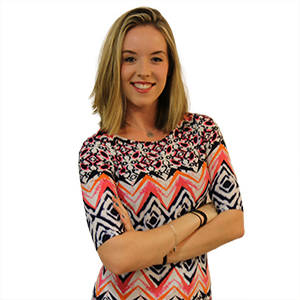From Threats to Gifted & Talented Programs to a State Audit of Special Ed: NYC School Headlines Worth Watching as 2019-20 Begins

Updated Sept. 3
The nation’s largest school district is headed back to school on Thursday. And while many of New York City’s 1.1 million students may have gotten a reprieve from the classroom, the education news cycle certainly didn’t idle.
Headlines this summer highlighted the deep challenges New York City schools still face in tackling educational inequity, though they’ve made progress in becoming more inclusive. The district continues to wrestle with how to integrate some of the most segregated schools in the country and to address its widely criticized special education services. Just in the last month, those two storylines spurred explosive new recommendations to eliminate gifted and talented programs in elementary schools and news of a state-led audit of schools serving more than 20,000 students with severe disabilities.
At the same time, the Department of Education is moving to expand restorative justice practices, incorporate curriculum that reflects student diversity and enable non-conforming students to more easily change their name and gender on school records.
Here’s a rundown of key issues to watch in 2019-20.
1 New (and even more controversial) integration ideas
How to create equity for students of color in New York City’s heavily segregated school system is one of — if not the — most hot-button and complex issue facing the district. And new school integration proposals released last week have already unleashed contentious debate.
The School Diversity Advisory Group, commissioned by Mayor Bill de Blasio to find ways to desegregate the city’s schools, has recommended phasing out gifted and talented programs, which test children as young as 4 years old and are overwhelmingly populated by white and Asian students. The G&T programs, which enroll roughly 16,000 students, would be replaced with either “enrichment models” — though it’s not entirely clear what those would entail — or non-selective magnet schools, whose instruction is usually built around a particular theme or subject. The recommendations also include ending selective admissions at most middle schools and prohibiting high schools from using lateness, attendance or geography to select their students.
Schools Chancellor Richard Carranza appeared to welcome the proposals at a news conference last week, but gave a more constrained take on Tuesday while confirming that no changes to G&T programs would happen this school year. “What I’m reading from the recommendations is that … we have to serve gifted students in a better way, in a way that makes sense, in a way that doesn’t exclude students,” Carranza said on WNYC’s The Brian Lehrer Show. “I think that’s something that we can all get behind.”
De Blasio, who is running for president and perhaps reluctant to embrace a fresh controversy, has been even more measured, saying in an interview Aug. 27 on MSNBC’s Morning Joe that, “It’s literally a recommendation that just came out. I’m going to assess it.” The mayor, who has state-appointed control over the system, has the power to end G&T programs, along with selective admissions at all traditional public schools except for three of the oldest elite specialized high schools.
There has been swift — and sharply divided — reactions to the recommendations. Some in support of eliminating G&T argue that the programs help “maintain racial and socio-economic segregation by creating exclusive educational spaces.” Teens Take Charge, a student activist group, applauded the idea of ending G&T and academic screening in middle schools, though it lamented that the report’s recommendations for high school integration “do not go far enough.”
Some critics worry, however, that dismantling the G&T program would drive higher-achieving middle-class white and Asian-American families out of the city’s public schools. Others, like the local teachers union, contend that it would be better to grow the gifted programs to reach a more diverse group of students than eliminate them.
These recommendations haven’t been the only integration proposals on the table. The mayor tried unsuccessfully this year to overhaul admissions requirements for the city’s eight elite specialized high schools, which only consider a student’s score on the rigorous SHSAT test. Student activists have presented their own proposal to the administration. And some districts, such as District 15, have taken matters into their own hands. The Brooklyn district is currently considering integrating seven elementary schools in the Red Hook, Carroll Gardens, Boerum Hill and Cobble Hill neighborhoods, with varying levels of support.
2 Latest test scores
Grades 3-8 in New York City schools saw overall improved test scores on state exams in both English and math in 2018-19, though proficiency continues to fall below 50 percent.
Some 47.4 percent of test takers scored proficient in English— a 0.7-percentage-point rise from last year that puts the city above the statewide average. Meanwhile, 45.6 percent passed math, a 2.9 percent increase from 2017-18 but shy of the statewide average. De Blasio also touted gains for third-grade students who’d been enrolled in his signature universal pre-K program.
The achievement gap, however, remains vast. About 28.3 percent of black students and 33.2 percent of Hispanic students were proficient in math, compared with 74.4 percent and 66.6 percent of their Asian and white peers, respectively.

Traditional district schools’ performance on these tests also continues to lag well behind charters’ performance: 63.2 percent of charter students in grades 3-8 scored proficient in math, and 57.3 percent were proficient in English. Apples-to-apples comparisons are tricky, however, when considering charters’ different demographics — they tend to serve a smaller proportion of students with disabilities, for example, and can have a longer school day and year.
3 School discipline reform
In a continuing shift from a “zero tolerance” approach to school discipline, the city is embracing a new “school climate package” that emphasizes students’ emotional well-being and restorative justice, a practice of defusing conflicts when students act out rather than doling out punishments. A few key takeaways from the package, introduced in June:
● A new agreement between the DOE and the New York Police Department, which oversees school safety agents in public schools, for the first time in two decades. Part of that agreement includes discouraging school safety agents from arresting students for minor offenses, such as marijuana possession or disorderly conduct.
● The maximum length of an out-of-school suspension is dropping from 180 days to 20 days. Suspensions disproportionately affect students of color; for example, about 46 percent of total suspensions in 2017-18 were issued to black students, even though they make up 26 percent of the school system. (There will be exceptions for violent offenses, including incidents involving guns and other weapons.)
● The DOE is bringing social-emotional learning and restorative justice practices to all schools. Elementary schools will have access to grade-specific SEL curriculum this year, thanks to a partnership with the National University System’s Sanford Harmony program. Restorative justice training will also be implemented over a three-year span at the middle and high school levels; it wasn’t immediately clear which schools are receiving that training in 2019-20. At least 50 middle schools systemwide will benefit from “intensive” restorative justice services through the Positive Learning Collaborative model.
The district this year is also hiring a “mobile unit” of 85 clinical social workers to help with crisis intervention and long-term care as necessary, department spokesman Will Mantell wrote in an email Thursday.
“We want our children to know that their voices, their struggles, and their triumphs matter. And we want them to build and practice the skills they need to become well-adjusted adults,” De Blasio and his wife, Chirlane McCray, wrote in a recent Forbes op-ed about the changes. “Our students deserve nothing less.”
4 Special ed oversight
Amid mounting complaints that the district is failing to provide vital and mandated services to tens of thousands of special education students, a state overseer is stepping in.
The Office of the State Comptroller announced last month that it would audit “health, safety and accessibility conditions” at District 75 schools, which enroll about 24,000 students with severe disabilities, the New York Post reported. One District 75 school in Queens featured in a disturbing story in the Post is falling apart, with cracked plaster and peeling paint.
The state comptroller’s oversight, which began on Aug. 13, is the office’s first District 75-specific audit to its knowledge, spokeswoman Tania Lopez wrote in an email. It’s not known at this point how many of the 57 schools in District 75 will be examined. A report isn’t expected for nine months to a year at the earliest, Lopez said.
Beyond the crisis facing the District 75 schools, nearly a quarter of the district’s more than 220,000 special education students don’t receive all of their required services. The number of special-education-related complaints also spiked 51 percent between the 2014-15 and 2017-18 school years, with 7,448 complaints received by February for the 2018-19 year, a state-commissioned report released in May found.
Bronx City Councilman Andy King became so disillusioned that he proposed in July moving special education services to be under the purview of the Department of Health and Mental Hygiene. His resolution is under review by the City Council’s Committee on Education.
Department officials, however, insist they’re doubling down on improving services. “We’re committed to serving students with disabilities in the most inclusive environments appropriate for their needs,” DOE spokeswoman Danielle Filson told the Brooklyn Daily Eagle last month. She noted that “[De Blasio’s] administration has hired 4,500 special education staff, added new autism and bilingual programs, and is investing $33 million in new special education resources this year.”
Separately, the DOE starting this school year is also prioritizing admission for students with disabilities at schools that are designated as partially and/or fully accessible.
5 Busing facelift
The DOE is optimistic that busing this year will run smoother than last year.
The department in August confirmed that GPS capabilities will be installed on every bus by the first day of school — something the City Council mandated in January for the 2019-20 school year. It also announced a $36 million, five-year partnership with Via, a ride-share service, to optimize the city’s bus routes and provide an app for parents to track their child’s bus location, route changes and vehicle delays. About 150,000 students take the bus every day.
The development follows a year of high-profile busing snafus, including an incident where preschoolers with special needs were stuck on a bus for eight hours. The number of breakdowns and delays have increased 73 percent in the past four school years, from 63,184 in 2015-16 to 109,058 in 2018-19, a recent analysis by the New York Daily News revealed.
The mobile app will not be ready for start-of-school, though the department “will begin piloting the mobile app this year,” Mantell said. De Blasio has said parents can call the central hotline to check on their child’s whereabouts in the meantime.
“It’s an unwieldy system,” De Blasio acknowledged in an Aug. 26 interview with Inside City Hall’s Errol Louis. “We’ve been working internally to figure out how to make it more uniform, how to make it more streamlined.”
6 Culturally responsive education
The Panel for Educational Policy in late July backed Chancellor Carranza’s call for “culturally responsive-sustaining education” that embraces curricula relevant to marginalized students’ experiences. This doesn’t mean such curriculum is mandated, but rather establishes a definition of what this type of education should look like in schools. It also affirms the DOE’s support of de-emphasizing Eurocentrism — the tendency to interpret the world in terms of European or Anglo-American values and experiences — in the city’s predominantly black and Hispanic school system.
Students of color often don’t see themselves in school curriculum and textbooks. Authors of books commonly used in elementary schools are, on average, 84 percent white — even though only 15 percent of the city’s public school students are white, according to a report released earlier this year from the NYC Coalition for Educational Justice.

The DOE had already developed some “culturally responsive resources” prior to the creation of this definition, Mantell pointed out, such as the Passport to Social Studies curriculum and the Hidden Voices Project. He added that the department held a related training for teachers this summer and will “continue to provide new professional development opportunities” throughout the year.
While these latest efforts are widely supported, some argue the department’s focus needs to be on “the urgent need to teach basic math, reading and science” rather than on race, The Wall Street Journal reported.
Other syllabus items to know
● LEAD PAINT: Nearly 1,900 New York City classrooms across the five boroughs have now tested positive for lead — about double the number initially reported in late July. The latest count includes additional inspections of more than 3,000 first-grade and District 75 classrooms, which serve students with severe special needs. The department has promised all affected classrooms will be remedied by the first day of school, and announced Thursday that it will now test for lead in school common areas. The ordeal this summer spurred calls for better parent outreach and more expansive, proactive testing. Exposure to lead paint can interfere with young children’s brain development and impede academic achievement. See all of Chalkbeat’s reporting in the last month here.
● FATE OF RENEWAL SCHOOLS: The 2018-19 year saw the end of the “Renewal” program, a more-than-four-year, nearly $800 million school turnaround effort that overall yielded lackluster results. And although the DOE has said the 71 low-performing schools left in the program would retain their partnerships with nonprofits, which offer wraparound services such as mental health counseling, as well as their current funding levels, a lot of questions remain. Chalkbeat reported this summer that interviews with principals across the city “suggest schools lack precise details about what type of support they will receive, creating uncertainty for the coming school year.” Carranza has not introduced an alternative initiative for bolstering the city’s lowest-performing schools.
● RE-EXAMINING REGENTS EXAMS: Amid a national debate over whether to decouple standardized test scores from student, teacher and school evaluations, New York state will re-evaluate the storied 141-year-old Regents exams (10 exams, five of which New York high schoolers typically have to pass to graduate). A commission assembled by state Board of Regents Chancellor Betty A. Rosa will examine this fall “to what degree requiring passage of Regents exams improves student achievement, graduation rates and college readiness,” according to the Times Union. At the local level, Mark Treyger, chair of the City Council’s Committee on Education, is drafting a resolution that calls for “abolish[ing] the Regents exams” in favor of other assessments, such as project-based learning, the Brooklyn Daily Eagle reported.
● ADMISSIONS PROCEDURE CHANGE: Starting this year, the middle and high school admissions processes will no longer have a second round of placements. Students will still initially apply to (and rank) up to 12 schools, but if they don’t get their top choice, instead of ranking 12 more schools, they will automatically be waitlisted at the schools they ranked above the one they got. (So, for example, a student accepted to the fourth school on their list will be placed on the waitlists for their top three choices). Read the department’s announcement here — and parents’ questions here.
● HOMELESS STUDENT POPULATION GROWS: The city saw a record level of homeless students last year, with nearly 115,000 — about 10 percent of its total enrollment — living “doubled up” in someone else’s apartment, in shelters or unsheltered. That’s more than twice the size of the Boston Public Schools system and enough students to fill Yankee Stadium twice. Homelessness places unrelenting stress on students, the Coalition for the Homeless says, resulting in a greater incidence of behavioral and academic difficulties.
● LGBT NAME/GENDER CHANGES: Updated DOE transgender guidelines now allow students to change their name and/or gender on their permanent school records without legal documentation. Permanent records include transcripts, diplomas and report cards. Any student can request a name and/or gender change via this form, though a parent or guardian has to sign off if the student is under 18 years old.
● SEX ABUSE PREVENTION ED: The New York state legislature in June passed a long-pending bill mandating that public schools teach all K-8 students how to spot the signs of child abuse — largely through learning about “safe” versus “unsafe” touches. Thirty-six other states have already passed similar bills mandating or allowing sex abuse prevention education in schools. Gov. Andrew Cuomo signed the bill into law two months later, on Thursday.
*This story has been updated to add Chancellor Carranza’s latest comments Tuesday on the School Diversity Advisory Group’s recommendations.
Get stories like these delivered straight to your inbox. Sign up for The 74 Newsletter

;)
